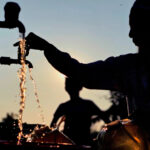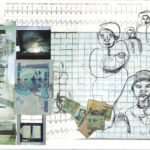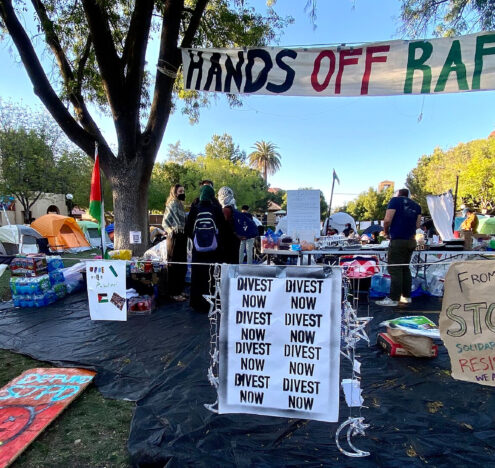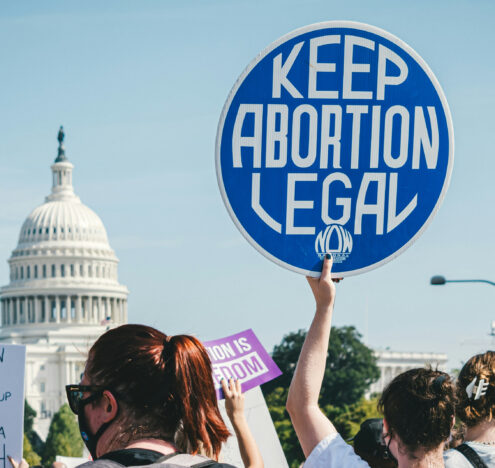Your news is likely filled with reports of rising violence. And you’re right: global rates of conflict are rising — dramatically.
In fact, many more crises are emerging and doing more damage than they used to: an unprecedented 1,200 Israelis were killed by Palestinians in one day in the Oct. 7 attack; equally unprecedented are the 25,000 Palestinian deaths in Gaza that have followed. The images proliferate: gangs marauding on live television in Ecuador; reports of mass killings in Sudan; Iranian and Yemeni strikes and counter-strikes.
Overall, global conflict rates increased 12% in 2023, with more than 15,000 additional attacks, bombings and assaults compared to 2022. This adds to the 32% increase in 2022 from 2021, when the Ukraine war assumed close to 28% of the global conflict share. One in six of us is living in an area of active conflict.
The rise has not been steady: before the pandemic, conflict rates were high but relatively stable, as both Afghanistan’s and Syria’s wars raged for several years. The pandemic saw a drop in conflict generally, but there has been a swift and sudden drive upwards since. The result is that we are living in a world indifferent to harms inflicted upon its citizens from many corners.
Current Kinds of Conflict
Acknowledging the disease is not a diagnosis. The rise in conflict reflects the chaotic politics we are experiencing worldwide. Three forms of concurrent political competitions are responsible for the violence. The first source of escalation is geopolitical competition. International violence, where a state invades or attacks another, is contributing at least 16% to the general growth in conflict — and double the rate of engagement recorded previously. Further, large, international conflicts where state militaries are involved in other countries are increasingly relying on mobile proxy groups, like Wagner (now PMC) operating at the behest of national governments with Russian interests, or the Houthi’s role as an Iranian proxy in the Red Sea.
These conflicts do not end when countries negotiate or retreat: conflicts adapt to political circumstances and shape-shift. Large geopolitical conflicts create a series of smaller conflicts for an extended time (see the examples of lingering violence in Syria and Iraq). Once major powers leave these contests, countries continue to be some of the most violent places in the world and a crucible for violence in neighboring states. We expect to see more violence from the Middle East in 2024 and 2025 from armed groups of political elites seizing the opportunity that current conflicts are providing. These will not be nationalist or even ideological contests, but openings in the political system that allow the violent to seize power. For example, recent deadly drone strikes on a US base in Jordan is one part of this trend since Oct. 7. Since that time, 200 violent events involving US forces in the Middle East have occurred, compared to just 12 in the preceding nine months.
Those living in deep conflict know that the most potent and growing forces in the world are political competition and authoritarianism, not inclusion, democracy, or a desire for peace.
But violence is still advancing on a broad front from the more than a hundred conflicts that persist and are getting worse. Most conflicts are more like those in Nigeria, where multiple armed groups generate violence in the same spaces, compared to Gaza, where state forces contest each other. Sudan’s violence is perhaps the most raw example: two armies, led by the most senior political elites in government, battling to force the other out of authority. The cost of their competition is, presently, far exceeding 13,000 fatalities and at least 26% of the country’s population exposed to active conflict. These conflicts are not because of poverty, marginalization, state fragility, or the weather, but politics, competition, and opportunism.
Complicating Conflict
Ongoing conflicts like Sudan’s — while very violent — are not the sole reason behind increases in conflicts. The most persistent, entrenched rise in violence in countries is in middle income and (aspiring) democratizing states — places like Brazil, Mexico, India, Nigeria, and Ethiopia. These conflicts complicate what we thought we knew about why conflict happens, who fights, and what can stop it. Consider Mexico, where in order for lucrative and illegal businesses to flourish, control over territory and those in government is necessary; these political assets create competition and blowback from others seeking to control the same. As a result, citizens in Mexico face the highest risk of targeted violence, outside of Gaza. And Mexican politician candidates are entering a campaign season in the midst of regular assassinations.
Common across all of these complex conflicts is the growing number of armed groups participating, each with a specific function and area of activity. Armed groups drastically increased in number as more traditional rebel and insurgent groups chose alternative forms. Fragmentation creates specialization: some groups fight the military and police, some fight other armed groups, some are specialists in attacking civilians, moving contraband, threatening voters during elections, or kidnapping. The number and specialization of groups suggests a market where political elites hire and support armed groups to assist them in their competition for authority and control of places and populations.
But how are more groups beneficial to the fighting parties? Because conflict is a contest for power. Most conflicts involve the slow and inconsistent process of accumulation and domination, and are won or lost by having more localities controlled by one group over the other. Having more local gangs and militias working for your political interests is how a modern warlord wins.
Those living in deep conflict know that the most potent and growing forces in the world are political competition and authoritarianism, not inclusion, democracy or a desire for peace. Political competition is indifferent to human rights and even stability. It does not require an ideology or even an identity — it is only concerned with authority and control. Elites are increasingly using violence to amass power, contest everything from mayoral races to the presidency, remove usurpers, and move populations out of preferred territory.
Countering this violence has proved incredibly difficult. A lack of international leverage and the sheer number of problems to contend with means that typical solutions — including recognition, legitimacy, development, and political engineering — do not appeal to these violent contenders. Instead, these leaders have fostered a system to game. As the authority of the old international system crumbles, regional leaders often feel forced into accepting new regimes to recognize what is happening on the ground, regardless of the costs conflict has inflicted on populations. For too long, we have ignored the signs that conflicts are changing and spreading. Might may not be right, but it is winning.





















